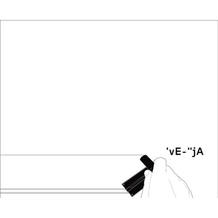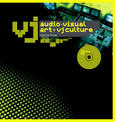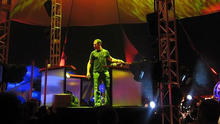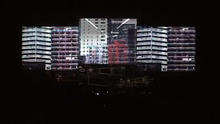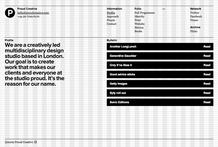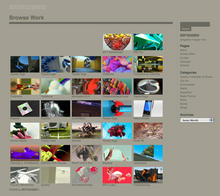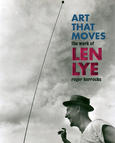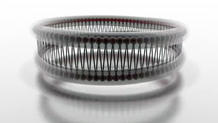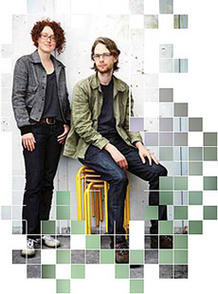Steve Reich: Second Movement
(2006)- D-Fuse, in collaboration with César Pesquera performed with the London Symphony Orchestra for Steve Reich's 70th Birthday concert at the Barbican Hall featuring live video mixed to Reich's The Desert Music.
"We've explored the relationship between image and sound, by creating live video mixed to accompany Steve Reich's music. Both the music and visuals draw on similar processes of rhythm, texture and meaning". (Mike Faulkner, D-Fuse)
The imagery for Reich's The Desert Music was specially created for this concert by VJs D-Fuse, in collaboration with César Pesquera. The video manipulation during Desert Music is the result of a live mixing process, which allows D-Fuse will build a visual performance in sync with the music as the LSO play it.
American composer Steve Reich is known as one of the godfathers of minimalism, but his shimmering orchestral scores are both spacious and generously expressive. The 50-minute cantata The Desert Music is his heartfelt response to the poetry of William Carlos Williams and the age of the bomb.
Reich composed Desert Music in five sections, with a long middle section sandwiched by two shorter sections on either side. The first and the last, and the second and the fourth sections relate to each other musically. In this way, the structure of music can be described as an arch (or A-B-C-B-A). D-Fuse made use of this structure visually and graphically in their live video material that evening, and manipulated their video footage with pulses and repetitions, similar to those which Reich uses in his music.
Much of D-Fuse's inspiration for this performance has come from the work of photographer Richard Misrach, whose moving images of the Mojave desert carry a powerful message about the implications of the controversial nuclear testing there; his photographs of Snow Canyon State Park and the Wendover Air Force Base in Utah have been particularly relevant.
Source: D-Fuse website
